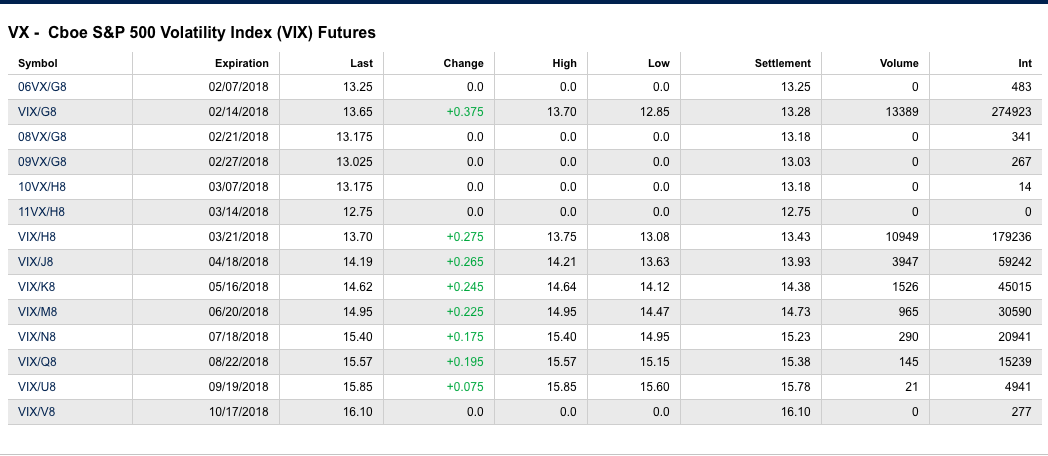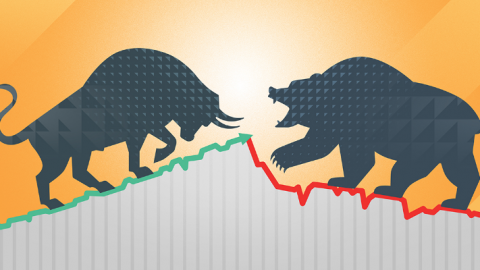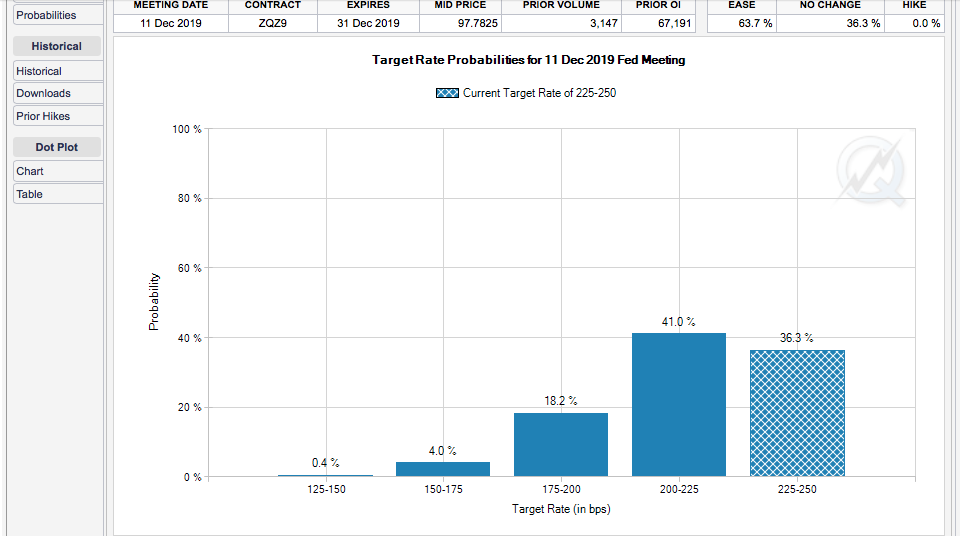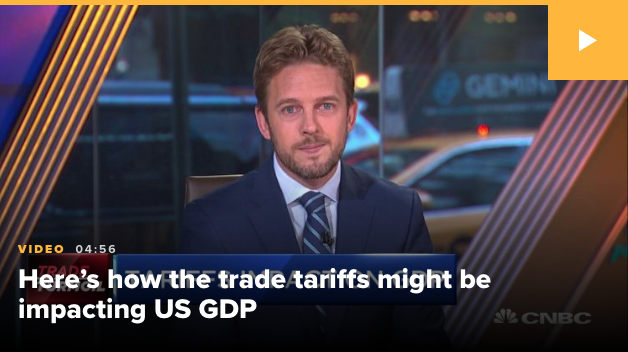U.S. equity futures are sharply lower and coming off a mixed performance in Thursday’s trading session. European equity markets are also lower in light of U.S. treasury yields rising. The U.S. 10 year yield has tipped 2.80%, raising concerns among investors that the economy is overheating and the Fed may be behind the curve. Meanwhile, the yield on 10-year German government bunds added 4 basis points to reach 0.690%, close to levels not seen in more than two years. The U.S. Federal Reserve has signaled at least three rate hikes this year, and the European Central Bank is widely expected to at least ease the pace of its €2.55 trillion quantitative easing program later this year amid the strongest economic performance for the region in a decade.
The S&P 500 was down 1.8% on the week as of Thursday’s close, set for its worst weekly performance since November 2016. The Dow average was facing a 1.6% weekly loss and the Nasdaq Composite was looking at a 1.6% loss, the steepest seen since last June. With Dow Futures lower by more than 250 points, investors are also gearing up for the release of the Nonfarm Payroll report. Economists polled by MarketWatch forecasting a gain of 185,000. The unemployment rate, which economists see holding steady at 4.1%, and average hourly earnings, expected to creep up 0.2 percent. With Wednesday’s exceptional ADP report, investors likely have boosted their expectations regarding today’s Nonfarm Payroll report.
Amazon.com Inc. reported one of its best fourth quarters ever after the closing bell yesterday. The e-commerce giant said it will focus on capital investments in the grocery and food sector through 2018. Music listening on Alexa devices was up 3X in the fourth quarter, according to Chief Financial Officer Brian Olsavsky. Alexa usage on the Amazon Fire TV Stick rose 9X year over year. Amazon.com said fourth-quarter earnings more than doubled to nearly $1.9 billion, or $3.75 a share, way above Wall Street’s forecast of $1.88. Net sales rose 38% to $60.5 billion, above the anticipated $59.75 billion. Amazon Web Services had $5.1 billion in sales, pretty much on par with the projected $5 billion earmark. AWS grew 38% year over year, compared with a 29% growth rate for North American sales and 45% for international. Amazon forecast that its operating income for the first quarter of 2018 would be between $300 million to $1 billion, below the $1.5 billion street consensus.
A number of analysts raised their price target for Amazon shares. Here are some of the biggest moves:
- Morgan Stanley raised its target to $1,500 from $1,400
- Barclays upped its price target to $1,580 from $1,210
- Credit Suisse raised its price target to $1,750 from $1,410
- Mizuho raised its price target to $1,700 from $1,300
- P. Morgan raised its price target to $1,650 from $1,385
- Bank of America Merrill Lynch raised its price target to $1,650 from $1,460.
GBH analyst Daniel Ive’s offered the following:
“In a nutshell, Amazon remains one of our favorite secular tech growth stories for FY18… and these robust results and 2018 outlook support the Amazon consumer growth thesis, coupled by cloud strength on the AWS segment which is still in the early innings of playing out among enterprises globally on the secular cloud theme,” Daniel Ives, head of technology research at GBH Insights, wrote in a note Thursday.
Apple Inc. reported a mixed bag of results depending on your viewpoint regarding the iPhone. Apple sold 77.3 million iPhones in the quarter, below estimates of 80.1 million and the 78.3 million iPhones that were sold during the year-earlier quarter. But average selling prices for the iPhone in the quarter of $796 topped expectations of $756. Earnings in the quarter were $3.89 a share, 3 cents above estimates. Revenue of $88.3 billion also topped Wall Street forecasts. Apple guided for second-quarter revenue of between $60 billion and $62 billion, short of consensus estimates of $65.4 billion.
Alphabet Inc. fell 3.8% in premarket trading on Friday after it missed Wall Street earnings forecasts, but topped revenue expectations. Google earned $9.70 a share in the fourth quarter, while analysts polled by FactSet expected profit of $9.98. Including the impact of the new U.S. tax law, Alphabet lost $4.35 a share. Fourth-quarter revenue rose 24% to $33.32 billion and well exceeded the consensus of $25.57 billion. Sales from core Google businesses, including search and mobile search, rose nearly 22% to $27.2 billion in the quarter. Google’s paid clicks, a closely watched metric, grew 43% though the average cost per click declined 14%. Total traffic acquisition costs increased 33% from a year earlier to $6.45 billion.
Bitcoin continues to come under pressure; recently falling below $9,000 and to lows not seen since last November. The virtual currency has dipped about 27% this week, to its current level. Some of the recent selling pressure is due to foreign clampdowns on the cryptocurrency. India’s finance minister Arun Jaitley came down hard on cryptocurrencies Thursday, as he said the government does not see them as a form of legal tender, according to media reports. Furthermore, Jaitley said Indian officials would “take all measures to eliminate use of these crypto-assets in financing illegitimate activities or as part of the payment system.”
With all the back and forth in equity markets this week, the VIX is finding itself edging higher once again in early Friday trade and prior to the release of key economic data. It proves relevant, as the 10-year Treasury yield has been heading higher, so has market volatility. The VIX is currently up nearly 10% prior to the market open and nearing the 15 level once again. VIX Futures are also spurred higher and nearing backwardation on February Futures.

We’ll definitely be trading the VIX-ETP complex as volatility rises on the day. With equity futures falling sharply there is usually an opportunity to scalp positions in VXX, UVXY or TVIX in the early trading hours and as such those are the opportunities we’ll deliver to subscribers at finomgroup.com. In our most recent Half-Time show, I discussed trading the VIX-complex as volatility increases, depicting the advantages long-term with respect to strong corporate earnings and a positive economic backdrop.
While the pre-market looks rather dismal, investors and traders will likely benefit from participating in the markets with a long-term outlook!









